In recent years, the kitchen appliance industry has witnessed a significant shift towards personalization and convenience, with made-to-order cuisine becoming increasingly popular. This trend has not only reshaped dining experiences but has also influenced the way we cook at home. One kitchen gadget that has seamlessly integrated into this movement is the contact grill. This article delves into the evolving dynamics of the contact grill market, exploring consumer preferences, technological innovations, successful case studies, and the challenges and opportunities that lie ahead.
Introduction to Contact Grills
Contact grills have become a staple in modern kitchens, offering a unique and convenient way to cook a variety of dishes. These versatile appliances use two heating plates that press down on the food, ensuring even cooking and a deliciously crispy texture. From backyard barbecues to busy weeknight dinners, contact grills have earned their spot as a favorite among home chefs and culinary enthusiasts alike.
These grills are designed to mimic the outdoor grilling experience, but with the added convenience of being able to cook indoors. They are perfect for those who love the flavor of grilled foods but lack the space or time for a traditional barbecue. The compact design of contact grills makes them ideal for small kitchens, apartments, or any setting where space is at a premium.
One of the standout features of contact grills is their ability to cook a wide range of foods. Whether you’re grilling steaks, burgers, sandwiches, or vegetables, these appliances can handle it all. The even distribution of heat ensures that the food is cooked to perfection on both sides, locking in the juices and flavors.
In recent years, the contact grill market has seen significant growth, driven by several factors. Firstly, the increasing health consciousness among consumers has led to a demand for healthier cooking methods that reduce the need for added fats and oils. Contact grills are a great option for those looking to enjoy grilled flavors without the guilt.
Secondly, the rise of foodie culture has encouraged people to experiment with different cooking techniques and ingredients. Contact grills offer a playground for culinary creativity, allowing users to explore various marinades, spices, and cooking times to achieve the perfect flavor profile.
Moreover, the convenience factor cannot be overlooked. Contact grills are easy to use, clean, and store. They typically come with adjustable temperature controls, allowing users to cook different types of food to their desired level of doneness. This versatility makes them a must-have for anyone who wants to enjoy a variety of grilled dishes without the hassle of flipping or turning the food.
In the world of contact grills, there are several popular brands and models that have captured the attention of consumers. For instance, the George Foreman Grill has become synonymous with the category, known for its flat-top design and ability to cook food in a fraction of the time it would take on a traditional grill.
Another key player in the market is the Breville Barista Express, which offers a contact grill feature alongside its espresso machine. This combination caters to the needs of coffee enthusiasts who want to enjoy both a freshly brewed cup of coffee and a perfectly grilled meal.
When it comes to choosing a contact grill, there are several factors to consider. The size of the grill is important, as it will determine how much food you can cook at one time. Larger models are great for entertaining, while smaller ones are perfect for individual or couple cooking.
The material of the grill plates is also a crucial factor. Cast aluminum and porcelain-coated steel are popular choices, as they distribute heat evenly and are durable enough to withstand regular use. Some models also come with non-stick coatings, making them even easier to clean.
Additionally, the presence of safety features can make a significant difference. Look for grills with cool-touch handles, automatic shut-off functions, and drip trays to prevent accidents and make cleanup a breeze.
In conclusion, contact grills have become a favorite among those who enjoy the taste of grilled food but want the convenience of cooking indoors. With their ability to cook a wide variety of dishes, their health benefits, and their ease of use, it’s no wonder that contact grills are a staple in many kitchens around the world. As the demand for made-to-order cuisine continues to grow, contact grills are well-positioned to become an even more integral part of the culinary experience.
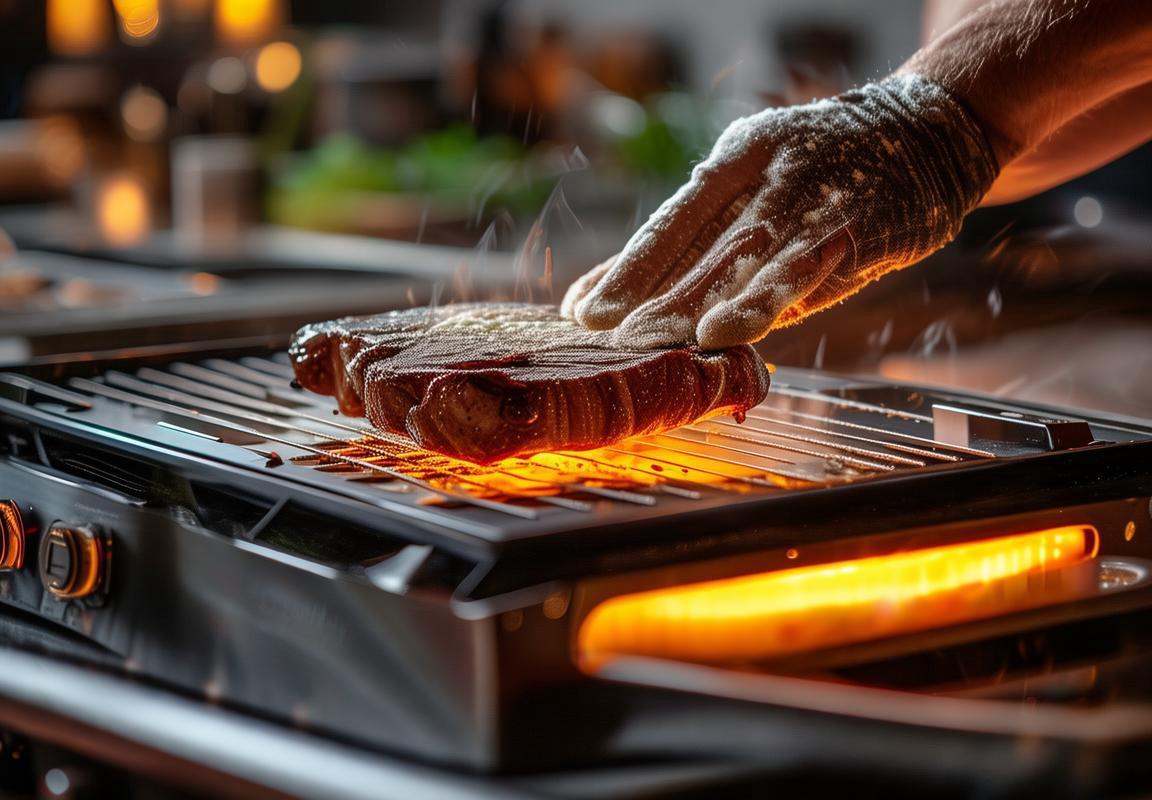
The Rise of Made-to-Order Cuisine
The culinary landscape has undergone a remarkable transformation in recent years, with a significant shift towards made-to-order cuisine. This movement has reshaped the way we think about food, emphasizing freshness, customization, and the personal touch. From gourmet cafes to high-end restaurants, the demand for made-to-order dishes has surged, and it’s not hard to see why.
Gone are the days when a quick meal meant settling for something pre-packaged or mass-produced. Today’s consumers are more health-conscious and value the ability to choose exactly what they want to eat. Made-to-order cuisine allows diners to select ingredients, portion sizes, and cooking methods, ensuring that their meal aligns with their dietary preferences and restrictions.
This trend has been further fueled by the rise of food apps and delivery services that make it easier than ever to order custom meals. Apps like Uber Eats, DoorDash, and Grubhub have become go-to platforms for customers seeking a variety of made-to-order options, from vegetarian and vegan dishes to gluten-free and low-carb meals.
Restaurants have also embraced this shift, with many offering made-to-order stations or interactive cooking experiences. These can range from a salad bar where customers pick their greens, dressings, and toppings to a sushi bar where they can watch their meal being crafted in front of them. The personalization extends beyond the plate, with many establishments allowing customers to choose their cooking temperatures and even the level of seasoning.
The made-to-order movement is not just a trend; it’s a reflection of broader cultural changes. People are increasingly interested in the stories behind their food, the origins of ingredients, and the sustainability practices of the businesses they support. Made-to-order cuisine caters to this desire for transparency and connection, as customers can often see where their food comes from and how it’s prepared.
In the kitchen, made-to-order cooking requires a different mindset and set of skills. Chefs must be adept at managing multiple orders simultaneously, ensuring that each dish is cooked to the customer’s specifications. This often means a more hands-on approach, with chefs often working directly with the customer to understand their needs.
The demand for made-to-order cuisine has also spurred innovation in kitchen technology. Modern kitchens are equipped with high-speed ovens, grills, and other appliances that can handle the volume and variety of orders efficiently. The use of sous-vide cooking, for example, has become popular for its ability to precisely control the temperature and cooking time of food, ensuring consistency across multiple orders.
Moreover, made-to-order cuisine has opened up new opportunities for niche markets and unique dining experiences. From gourmet food trucks offering exotic flavors to pop-up restaurants specializing in a single dish, the industry has become more diverse and dynamic. This has not only expanded the options for consumers but has also created new career paths for chefs and culinary entrepreneurs.
Despite the many benefits of made-to-order cuisine, it’s not without its challenges. For one, it requires a significant investment in both time and resources. Restaurants must train staff to handle the increased workload and invest in technology that can keep up with the pace. Additionally, maintaining the quality and consistency of made-to-order dishes can be difficult, especially during peak hours.
However, the rewards of embracing made-to-order cuisine are substantial. It fosters a deeper connection between customers and their food, encourages culinary creativity, and can lead to increased customer loyalty and revenue. As the trend continues to grow, it’s clear that made-to-order cuisine is here to stay, reshaping the way we eat and enjoy our meals.
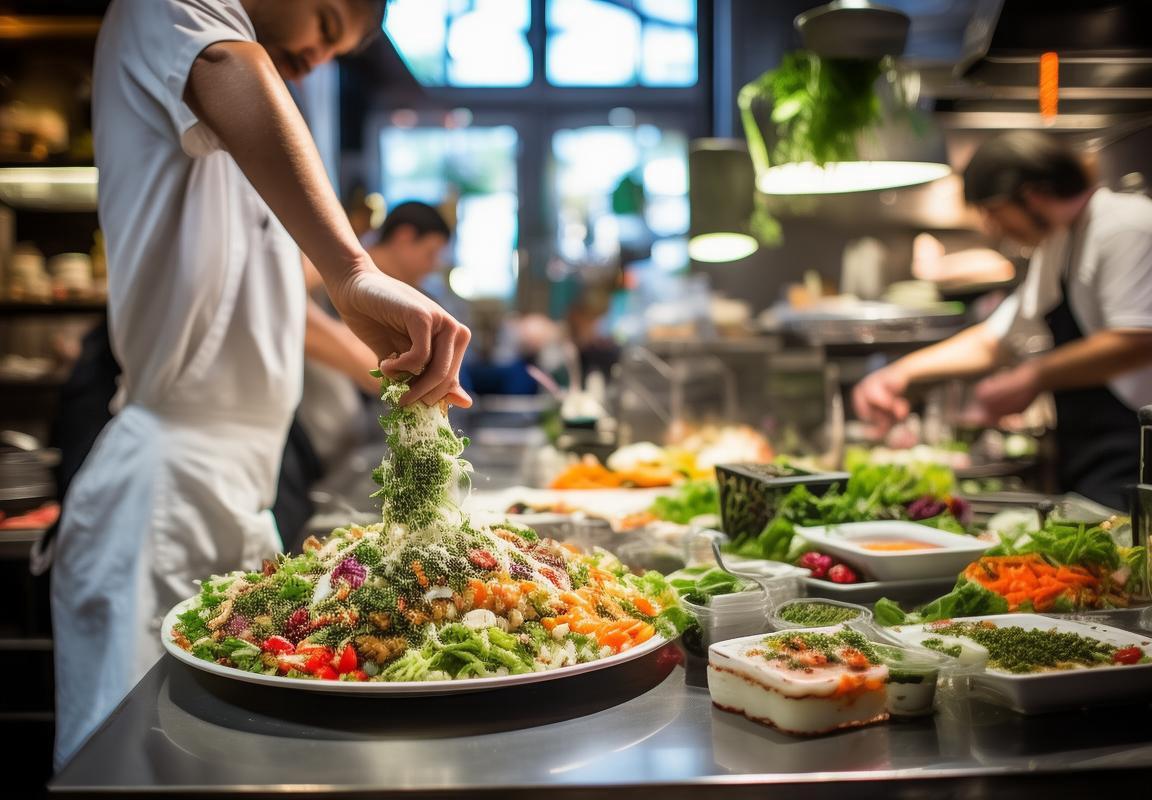
Contact Grills: The Perfect Match for Made-to-Order
Contact grills have emerged as a kitchen staple, and their popularity is soaring due to their versatility and precision in cooking. This rise is intricately tied to the growing demand for made-to-order cuisine, where customization and quality are paramount. Here’s how contact grills have become the perfect match for this culinary trend.
Grilling with PrecisionContact grills are designed to cook food evenly, which is essential for made-to-order meals. The even distribution of heat ensures that every bite is perfectly cooked, from the exterior sear to the interior doneness. This level of control is crucial for chefs and home cooks who want to serve dishes that meet each customer’s specific requirements.
Customization in Every BiteMade-to-order cuisine thrives on individuality, and contact grills allow for this personal touch. From selecting the type of meat, the level of doneness, and the exact seasoning, contact grills make it possible to cater to a diverse range of tastes and preferences. The ability to adjust the temperature and cooking time provides a canvas for creativity in the kitchen.
Versatility Across a Wide Range of IngredientsOne of the key advantages of contact grills is their ability to handle various types of ingredients. Whether it’s delicate fish fillets, hearty steaks, or vibrant vegetables, these grills can accommodate them all. This adaptability is a game-changer for restaurants and home chefs who want to offer a made-to-order menu that’s both diverse and delicious.
Quick Cooking TimesIn the world of made-to-order, time is of the essence. Contact grills offer rapid cooking times, which is perfect for busy kitchens. The quick heat-up and cooking process mean that customers can receive their customized meals almost instantly, enhancing the overall dining experience and reducing wait times.
Hygiene and CleanlinessContact grills are typically easier to clean compared to traditional grills, which is a significant advantage in a made-to-order environment. The non-stick surfaces and removable parts make it a breeze to maintain cleanliness, which is vital for food safety and customer satisfaction.
Reduced Food WasteWith made-to-order cuisine, the risk of overcooking or preparing too much food is minimized. Contact grills’ precise cooking capabilities mean that ingredients are used efficiently, reducing food waste and contributing to a more sustainable approach to food preparation.
Enhanced Flavor and TextureThe unique design of contact grills, with their flat surfaces and even heat distribution, allows for a distinct sear that enhances the flavor and texture of food. This is particularly appealing for made-to-order dishes that aim to stand out in terms of taste and presentation.
Flexibility in Menu OfferingsRestaurants that offer made-to-order meals can expand their menu offerings without the need for additional cooking equipment. Contact grills can handle a variety of cooking techniques, from searing to grilling to even toasting, making them a versatile tool for creating an extensive and varied menu.
Customer EngagementThe use of contact grills can be a delightful addition to the dining experience. Customers can watch their meals being prepared right in front of them, fostering a sense of engagement and anticipation. This visual connection can be a powerful tool for marketing and building a loyal customer base.
Cost-Effective SolutionFor restaurants looking to offer made-to-order cuisine without breaking the bank, contact grills are an excellent investment. They are more affordable than many other cooking appliances and can pay for themselves quickly through increased efficiency and customer satisfaction.
In conclusion, the synergy between contact grills and made-to-order cuisine is a testament to the evolving demands of the food industry. The precision, versatility, and efficiency of contact grills make them an ideal choice for kitchens aiming to provide customized meals that delight the senses and meet the expectations of today’s discerning diners.
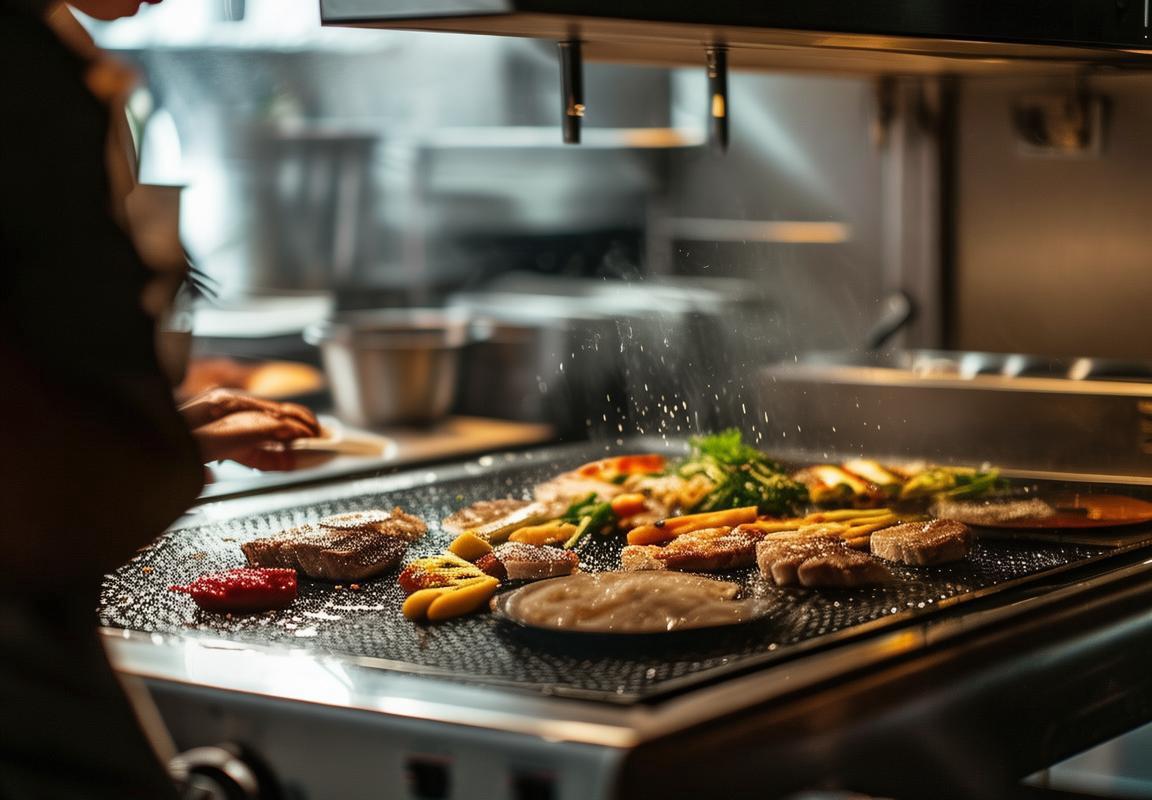
Market Dynamics in Europe and North America
In the realms of kitchen appliances, the contact grill has emerged as a versatile tool that perfectly complements the rising trend of made-to-order cuisine. Here’s a closer look at the market dynamics in Europe and North America, where these trends are particularly pronounced.
The European market has long been a hotbed for culinary innovation, and this is no different when it comes to made-to-order cuisine. With a diverse range of cultures and tastes, European consumers are increasingly seeking personalized dining experiences. This shift has been fueled by a growing interest in health and wellness, as well as a desire for authentic flavors and fresh ingredients. Contact grills, with their ability to cook a variety of proteins, vegetables, and carbohydrates to individual specifications, have become a staple in many European kitchens.
North America, on the other hand, has seen a surge in the demand for made-to-order meals due to the rise of fast-casual dining concepts. These establishments offer customers the option to customize their dishes, often using a build-your-own approach that allows for a high degree of personalization. Contact grills have found a niche in this market, providing a quick and efficient way to cook a variety of proteins, which are a key component in these customizable meals.
One of the key factors driving the growth of the contact grill market in both regions is the emphasis on health and wellness. Contact grills offer a healthier alternative to traditional grilling methods, as they reduce the need for additional fats and oils. This feature is particularly appealing to health-conscious consumers who are looking for ways to enjoy their favorite foods without compromising on their dietary goals.
The European market is characterized by a strong preference for high-quality, durable appliances. Consumers are willing to invest in products that not only perform well but also look stylish and fit seamlessly into their kitchen environments. This has led to a demand for contact grills that come with advanced features such as non-stick surfaces, variable heat settings, and easy-to-clean designs. Brands that cater to these preferences are likely to see increased sales in the European market.
In North America, the contact grill market is influenced by the rise of e-commerce and the importance of convenience. Consumers are looking for appliances that are easy to order online and arrive at their doorstep with minimal effort. Additionally, the popularity of social media has played a role in the market dynamics, with influencers and chefs often showcasing their favorite contact grills to their followers, which can lead to increased demand.
Another important aspect of the market dynamics in both Europe and North America is the trend towards sustainability. Consumers are becoming more environmentally conscious and are looking for products that are eco-friendly and have a lower carbon footprint. Contact grills that are energy-efficient and made from sustainable materials are likely to gain a competitive edge in these markets.
The competition in the contact grill market is fierce, with several established brands vying for market share. However, there are opportunities for new entrants to carve out a niche by focusing on specific segments or by introducing innovative features. For example, some brands are offering contact grills with built-in temperature sensors to ensure consistent cooking results, while others are introducing smart grills that can be controlled via a smartphone app.
The market dynamics in Europe and North America also reflect the global influence of food trends. The popularity of international cuisines, such as Korean barbecue and Mediterranean flavors, has led to a demand for contact grills that can handle different types of cooking techniques. This has necessitated the development of grills with adjustable heat zones and additional attachments that allow for smoking, roasting, and searing.
In conclusion, the contact grill market in Europe and North America is driven by the growing trend of made-to-order cuisine, consumer health and wellness concerns, and the desire for personalized and sustainable kitchen appliances. As these trends continue to evolve, manufacturers will need to stay attuned to changing consumer preferences and market demands to maintain a competitive edge.
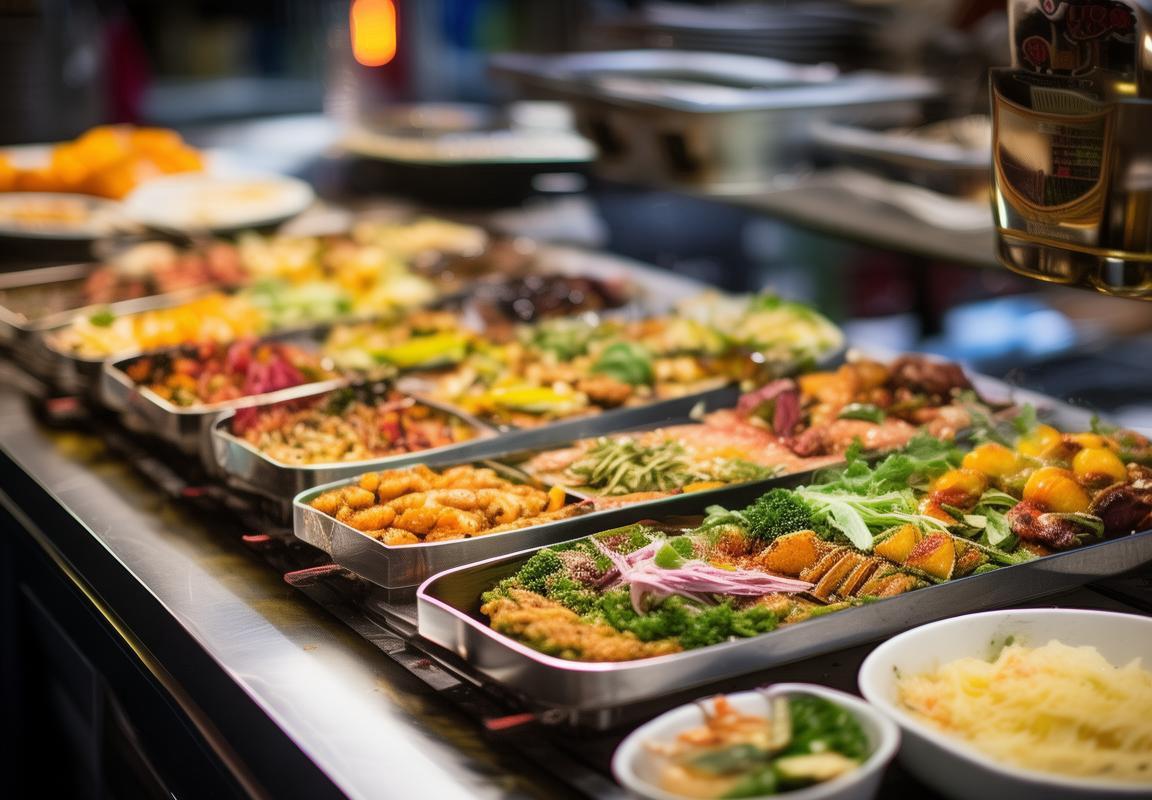
Consumer Preferences and Features
In the realm of kitchen appliances, contact grills have emerged as a versatile and popular choice for both professional chefs and home cooks. These appliances offer a unique cooking experience that closely aligns with the principles of made-to-order cuisine. Let’s delve into the key consumer preferences and features that make contact grills the perfect match for this culinary trend.
The demand for customization is at an all-time high, and contact grills cater to this desire with their ability to cook a variety of foods to specific temperatures and doneness levels. Consumers appreciate the precision that contact grills provide, allowing them to create personalized meals that suit their individual tastes and dietary preferences.
One of the standout features of contact grills is their even heat distribution. Unlike traditional grills or cooktops, contact grills maintain a consistent temperature across the cooking surface, ensuring that each piece of food is cooked uniformly. This feature is particularly appealing to consumers who value the texture and flavor profile that even cooking can bring to their meals.
In the world of made-to-order cuisine, the ability to cook a wide range of ingredients is crucial. Contact grills excel in this area, as they can handle meats, vegetables, and even delicate fish without the risk of burning or overcooking. The non-stick surfaces on many models further enhance the ease of cooking and the quality of the final dish.
The convenience factor cannot be overstated when it comes to contact grills. With features like adjustable temperature settings and rapid heating times, these appliances allow for quick and efficient cooking. Consumers are drawn to the idea of being able to prepare a meal in a fraction of the time it would take on a traditional grill or stove, making contact grills a practical choice for busy lifestyles.
Safety is a paramount concern for many consumers, especially when it comes to cooking. Contact grills often come with safety features such as cool-touch handles and automatic shut-off mechanisms. These features not only protect the user but also ensure that the appliance is reliable and durable, factors that are highly valued in the made-to-order market.
Ease of cleaning is another important aspect that influences consumer preferences. Contact grills are typically designed with removable cooking plates and non-stick surfaces, making them straightforward to clean after use. The ability to quickly wipe down the cooking surface or simply wash the removable parts is a significant draw for those who prioritize convenience and efficiency in their kitchen appliances.
In the realm of made-to-order cuisine, the ability to achieve a perfect sear is a hallmark of high-quality cooking. Contact grills deliver this with their ability to press food against the heating surface, locking in flavors and creating a caramelized crust. Consumers are increasingly seeking out appliances that can replicate the taste and texture of traditional grilling, and contact grills deliver on this expectation.
The portability of contact grills is also a feature that resonates with consumers. Whether for a picnic, a beach day, or simply the convenience of being able to cook in different locations around the home, the compact and lightweight design of many contact grills makes them a practical choice for those who value flexibility in their cooking tools.
Lastly, the aesthetic appeal of contact grills should not be overlooked. Modern designs, sleek lines, and a variety of finishes have made these appliances not just functional but also stylish additions to any kitchen. Consumers are drawn to appliances that not only perform well but also enhance the overall look and feel of their cooking space.
In summary, the consumer preferences for contact grills in the made-to-order market are multifaceted, encompassing customization, even cooking, convenience, safety, ease of cleaning, superior taste, portability, and aesthetic appeal. These features make contact grills an ideal choice for those who seek to create made-to-order meals that are both delicious and convenient.
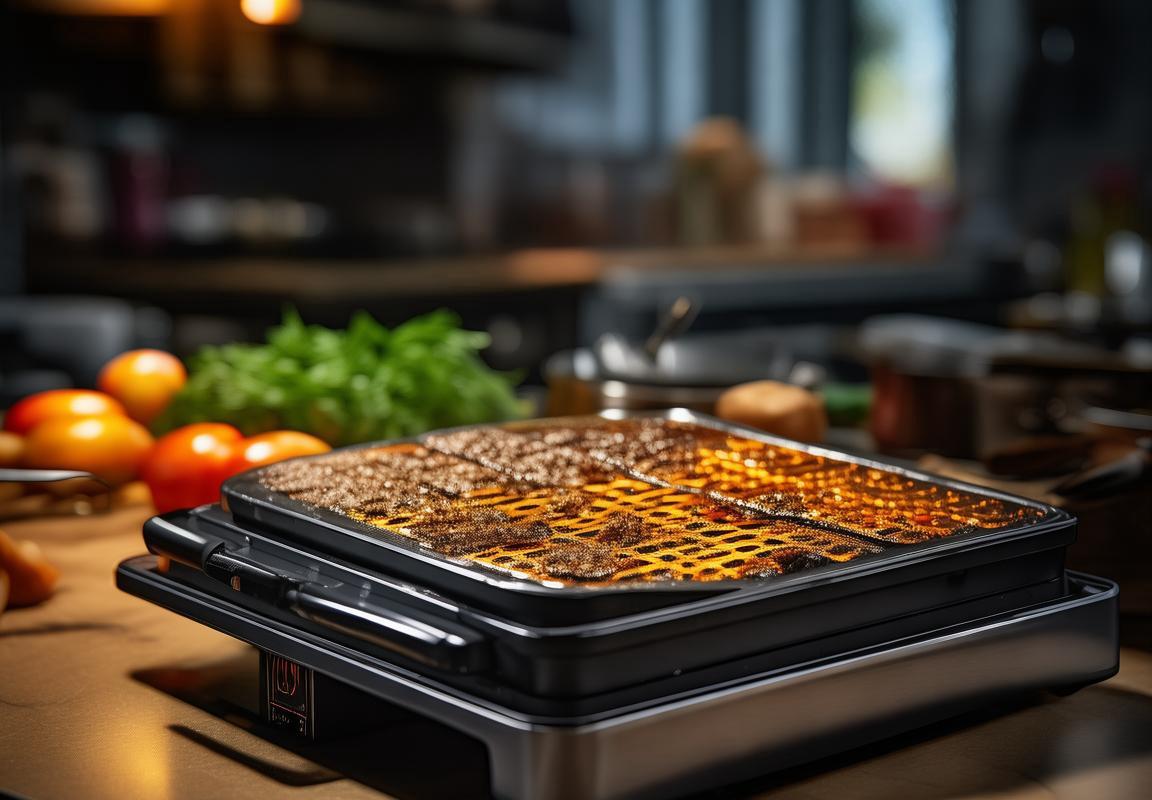
Innovations in Contact Grill Technology
The world of contact grill technology has been witnessing a surge of innovation, driven by consumer demand for convenience, versatility, and health. Here’s a look at some of the latest advancements shaping the market:
-
Precision Temperature ControlModern contact grills now come with precise temperature control systems that allow users to set and maintain exact cooking temperatures. This feature is crucial for made-to-order cuisine, as it ensures that food is cooked to the perfect level of doneness, whether it’s rare steak or well-done chicken.
-
Non-Stick SurfacesThe non-stick surfaces of contact grills have evolved significantly. Newer models feature ceramic coatings that are more durable and heat-resistant than traditional non-stick coatings. This not only makes clean-up easier but also reduces the need for excessive oil, contributing to healthier cooking.
-
Variable Cooking PlatesGrill plates have become more versatile with the introduction of variable designs. Some grills now offer plates with multiple surfaces, such as a flat top for searing and a ridged top for grilling, allowing for a wider range of cooking techniques in a single appliance.
-
Smart Cooking FunctionsSmart technology has made its way into contact grills, with models that can be controlled via smartphone apps. Users can set cooking times, temperatures, and even monitor the grill remotely. This level of control is particularly beneficial for those who want to ensure their food is cooked to perfection without constant supervision.
-
Integrated Searing StationsFor those who enjoy the distinct flavor of seared food, contact grills with integrated searing stations have become popular. These stations provide an extra heat source to quickly sear the outside of meats and vegetables, locking in flavors and creating a professional-grade finish.
-
Fast and Efficient Heat DistributionThe distribution of heat has been a focus of innovation, with manufacturers aiming to ensure even cooking across the entire grill surface. Some models use advanced heat distribution technology, such as a combination of conduction and convection, to prevent hot spots and cold spots.
-
Enhanced Safety FeaturesSafety has not been overlooked in the latest contact grill technology. New models often include features like cool-to-the-touch handles, automatic shut-off after a certain period of inactivity, and child safety locks to prevent accidental use.
-
Eco-Friendly DesignEnvironmental concerns have led to the development of contact grills with eco-friendly designs. This includes materials that are recyclable or made from sustainable sources, as well as energy-efficient heating elements that reduce power consumption.
-
Customizable Cooking ProfilesFor those who are particularly passionate about cooking, some contact grills now offer customizable cooking profiles. Users can save their preferred settings for different types of food, making it easier to replicate favorite recipes time after time.
-
Sleek and Space-Saving DesignsAesthetics and practicality have been combined in the latest contact grill designs. Many models now feature sleeker profiles and foldable legs for easy storage, making them ideal for smaller kitchens or for those who prefer a clutter-free environment.
These innovations in contact grill technology reflect a commitment to meeting the diverse needs of consumers who are looking for high-quality, healthy, and convenient cooking solutions. As the demand for made-to-order cuisine continues to grow, it’s likely that we’ll see even more advancements in the future, pushing the boundaries of what’s possible in the kitchen.
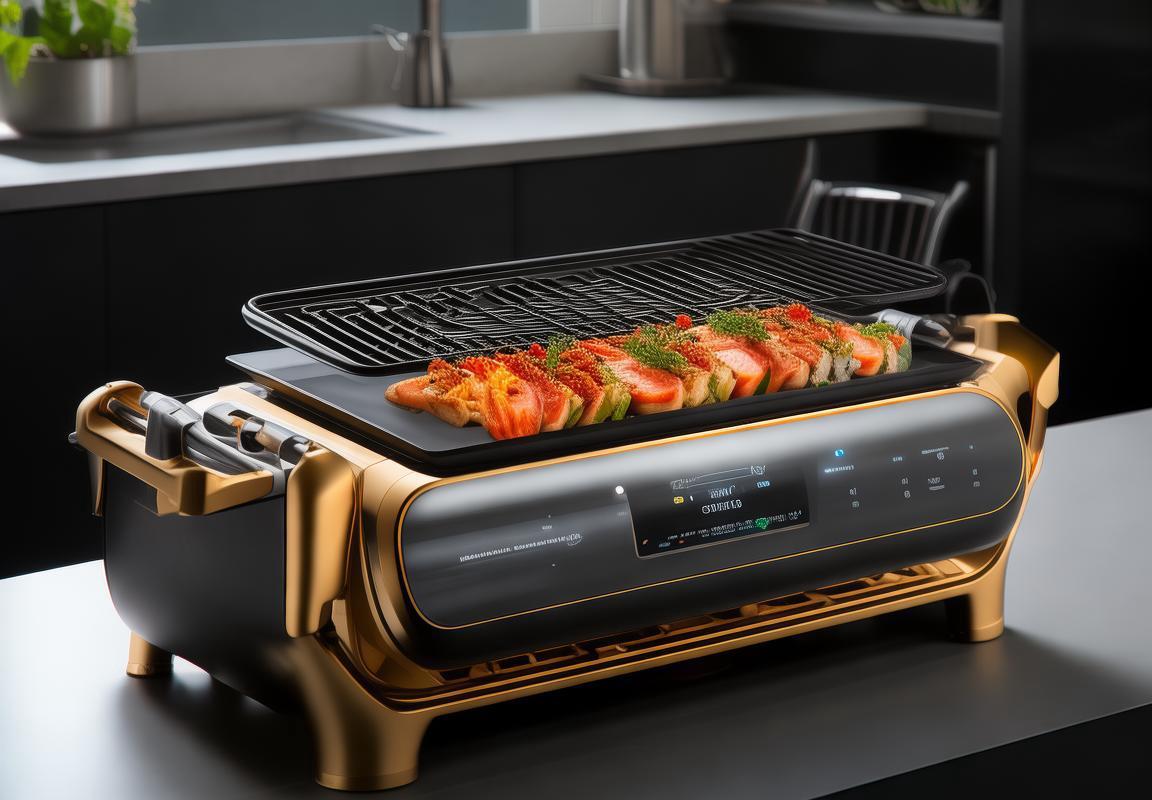
Case Studies: Successful Made-to-Order Contact Grill Implementations
In a world where culinary preferences are as diverse as they are personal, the made-to-order dining experience has surged in popularity. This trend has not gone unnoticed by the appliance industry, particularly within the realm of contact grills. Here are some compelling case studies showcasing successful implementations of made-to-order contact grill systems.
At the heart of a bustling café in downtown Berlin, a sleek, modern contact grill stands as a testament to the fusion of technology and culinary art. The café’s chef, a self-proclaimed grill enthusiast, has integrated the contact grill into their menu, offering a variety of customized grilled dishes. The grill’s precise temperature control and non-stick surface have become a favorite among customers, who appreciate the ability to choose from a range of toppings and spices.
On the other side of the Atlantic, a high-end steakhouse in New York City has embraced the made-to-order concept with a custom-built contact grill that allows patrons to select their desired level of doneness. The grill’s ability to cook at high temperatures ensures that each steak is seared to perfection, while its adjustable heat settings cater to the most discerning palates. The result is a dining experience that combines the convenience of made-to-order with the authenticity of a traditional grill.
A family-run Mediterranean restaurant in San Francisco has found a unique way to incorporate the made-to-order contact grill into their menu. Specializing in fresh, grilled seafood, the restaurant offers a selection of live seafood that customers can choose from. The contact grill then cooks the seafood to order, ensuring the freshest and most flavorful dishes. The system has been so successful that it has become a focal point of the restaurant, drawing in foodies and seafood aficionados alike.
In the heart of Tokyo, a trendy sushi bar has taken the made-to-order concept to new heights with a contact grill designed specifically for sushi preparation. The grill’s surface is treated with a special non-reactive material that prevents fish from sticking and preserves its natural flavor. Patrons can watch as their sushi is meticulously crafted and then quickly grilled, resulting in a unique dining experience that blends the traditional with the innovative.
A bustling food truck in Los Angeles has harnessed the power of the made-to-order contact grill to offer a diverse range of street food. From gourmet hot dogs to gourmet sandwiches, the grill’s versatility allows the chef to create a variety of dishes on the spot. The system is compact yet powerful, making it an ideal choice for a mobile kitchen. The food truck’s popularity has soared, thanks in part to the interactive nature of the made-to-order contact grill.
In a cozy bistro in Paris, the made-to-order contact grill has become a staple in the kitchen. Specializing in French cuisine, the chef uses the grill to prepare a variety of dishes, from delicate grilled vegetables to tender meats. The grill’s ability to provide consistent heat and even cooking has made it an indispensable tool. The bistro’s patrons have come to expect the high-quality, made-to-order dishes that the contact grill delivers.
In each of these case studies, the made-to-order contact grill has played a pivotal role in enhancing the dining experience. By allowing customers to choose their preferred ingredients, cooking methods, and levels of doneness, these restaurants and food establishments have created a sense of personalization that keeps customers coming back for more. The success of these implementations is a clear indication that the made-to-order contact grill is more than just a trend; it’s a game-changer in the culinary world.
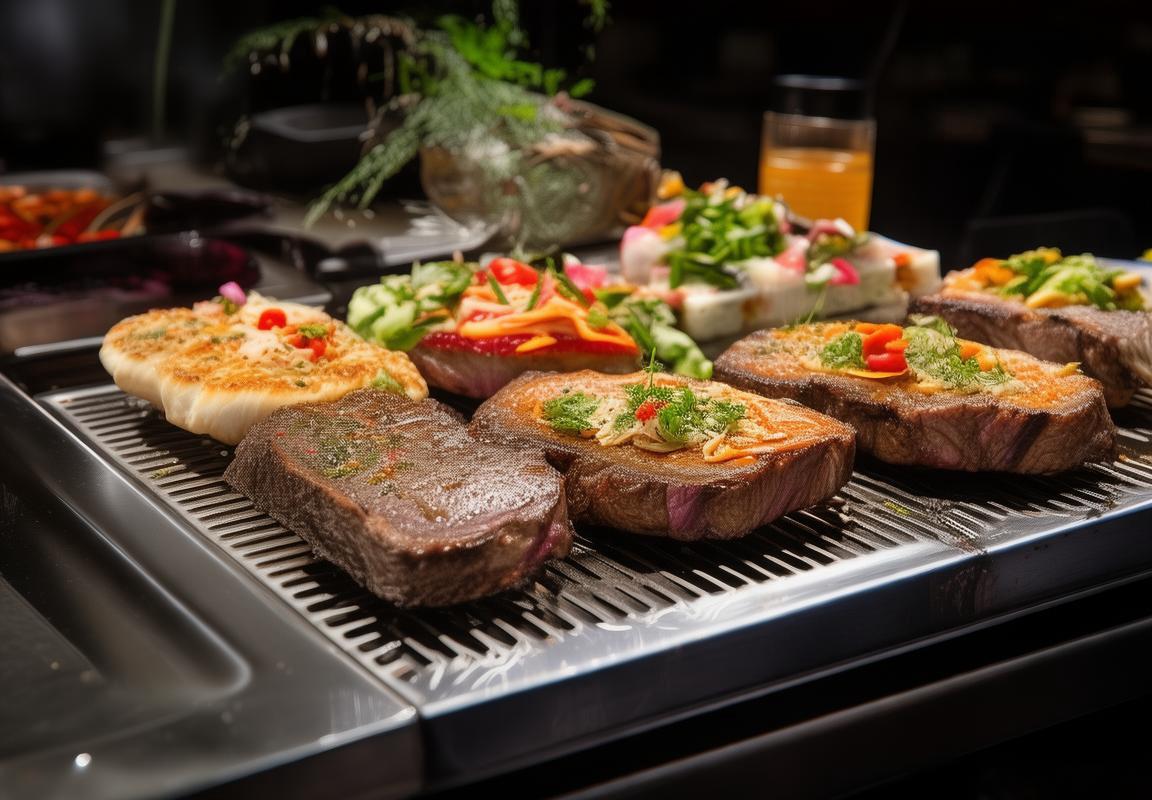
Sales and Distribution Channels
In the ever-evolving landscape of kitchen appliances, the distribution and sales channels for contact grills have become crucial in reaching consumers who value made-to-order cooking experiences. The market has seen a shift towards more specialized and direct-to-consumer approaches, reflecting the changing preferences of today’s consumers.
The rise of online marketplaces has significantly transformed the sales landscape for contact grills. Websites like Amazon, eBay, and specialized kitchen appliance retailers have become go-to destinations for consumers seeking high-quality, made-to-order grills. These platforms offer a vast array of options, from budget-friendly models to premium, feature-rich units, catering to a wide range of consumer needs.
Brick-and-mortar stores, while still popular, have had to adapt to the changing times. Large home improvement and kitchenware chains have expanded their product lines to include a variety of contact grills, often showcasing them in-store to allow customers to see and touch the products before purchasing. This tactile experience can be a significant factor in the decision-making process for many consumers.
Specialty kitchen stores have also emerged as a niche market for contact grills. These stores offer a more curated selection, often with knowledgeable staff who can provide detailed information about the grills and their capabilities. They cater to consumers who are passionate about cooking and are willing to invest in high-quality appliances that meet specific needs.
Direct-to-consumer (DTC) models have gained traction, particularly with manufacturers who want to maintain control over their brand and customer experience. By selling directly to consumers, these brands can offer personalized service, exclusive deals, and a closer relationship with their customer base. This approach can also reduce costs, as manufacturers eliminate the need for intermediaries.
Social media and influencer partnerships have become powerful tools in the sales and distribution of contact grills. Influencers, chefs, and cooking enthusiasts often share their experiences with various grills, providing authentic reviews and recommendations to their followers. This word-of-mouth marketing can be incredibly effective, as consumers tend to trust the opinions of those they follow.
The rise of subscription box services has also impacted the distribution of contact grills. These services offer a monthly or quarterly box filled with kitchen gadgets and accessories, including contact grills. This model is appealing to consumers who enjoy trying new products and can be a great way for manufacturers to introduce their grills to a broader audience.
Special events and trade shows play a role in the distribution of contact grills as well. Manufacturers often use these occasions to showcase their latest models and engage with potential customers. Attendees can get hands-on experience with the grills, and the networking opportunities can lead to new sales channels and partnerships.
In the realm of sales and distribution, customer service remains a key differentiator. Brands that offer exceptional customer support, including easy returns and exchanges, are more likely to build a loyal customer base. This support is particularly important when dealing with high-priced kitchen appliances like contact grills.
As the market for contact grills continues to grow, so does the importance of data analytics and customer insights. Manufacturers and retailers are increasingly using data to understand consumer behavior, optimize inventory, and tailor marketing strategies. This data-driven approach ensures that the right products are in the right places at the right time.
The sales and distribution channels for contact grills are diverse and multifaceted, reflecting the dynamic nature of the market. From online marketplaces to influencer partnerships and subscription box services, the industry is continuously adapting to meet the evolving demands of consumers who seek the convenience and quality of made-to-order cooking experiences.
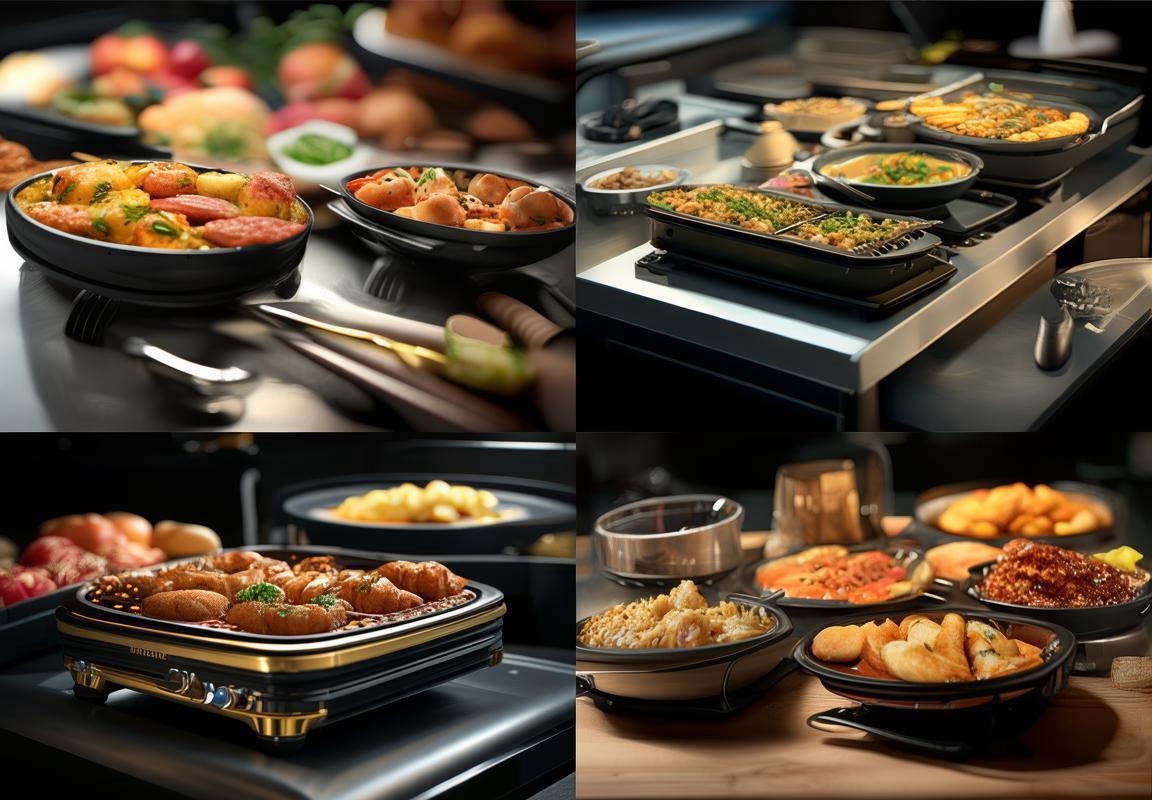
Challenges and Opportunities
In the ever-evolving landscape of the kitchen appliance market, contact grills have emerged as a versatile and sought-after tool for both professional chefs and home cooks. These compact cookers offer a unique grilling experience that combines the convenience of a countertop appliance with the authenticity of open-grill flavor. However, as the demand for made-to-order cuisine continues to soar, the industry faces a myriad of challenges and opportunities that will shape the future of contact grills.
The challenge of customization lies in the ability to cater to the diverse preferences of consumers who are increasingly looking for personalized dining experiences. Contact grill manufacturers must navigate this challenge by offering a range of features that allow users to adjust heat levels, cooking times, and even the type of surface for grilling, whether it’s a flat top, ridged grill, or a combination of both.
Opportunities arise when manufacturers collaborate with foodservice operators to create contact grills that are not only user-friendly but also designed with efficiency and sustainability in mind. This could include energy-saving features and durable materials that reduce maintenance costs and extend the lifespan of the appliance.
Another challenge is the need for educational content to help consumers understand the full potential of contact grills. With the right marketing and instructional materials, manufacturers can showcase the versatility of these devices, from grilling steaks and vegetables to searing fish and poultry. By highlighting these capabilities, they can tap into a broader market of home cooks who may not have considered contact grills as a staple in their kitchen.
On the opportunity side, there’s a clear trend towards healthier eating habits, which is boosting the demand for contact grills. These appliances allow for healthier cooking methods like grilling, which can reduce the amount of oil used compared to frying. Manufacturers can leverage this trend by promoting their products as a healthier alternative to traditional cooking methods.
The challenge of adapting to different cooking styles and cultural preferences is significant, as consumers around the world have varying tastes and preferences. However, the opportunity here is to create contact grills that can cater to these diverse needs. For example, a grill with adjustable heat zones can accommodate both Mediterranean-style high-heat grilling and Asian-style low-and-slow cooking.
In the realm of technology, contact grill manufacturers face the challenge of integrating smart features that can enhance the cooking experience. This includes features like temperature control, Bluetooth connectivity for recipe downloads, and even built-in timers and alarms. The opportunity here is to create a product that not only simplifies cooking but also provides a seamless experience for users who are accustomed to technology in their daily lives.
Moreover, the challenge of sustainability is becoming more pronounced as consumers become more environmentally conscious. Opportunities exist for manufacturers to address this concern by producing contact grills with eco-friendly materials, such as recycled stainless steel, and by designing appliances that are energy-efficient and durable.
In the service sector, the challenge is to provide reliable after-sales support and customer service. Opportunities arise when manufacturers invest in training their sales and service teams to offer personalized assistance and troubleshooting. This can lead to increased customer satisfaction and loyalty.
The challenge of staying ahead of the competition is constant, especially with the entry of new players in the market. The opportunity is to innovate continuously, whether it’s through new features, improved design, or enhanced user experience. By doing so, manufacturers can differentiate their products and maintain a competitive edge.
Lastly, the challenge of regulatory compliance is a critical consideration, as contact grills must meet safety standards and certifications in various regions. The opportunity here is to ensure that all products are not only compliant but also exceed these standards, thus building trust with consumers and regulatory bodies alike.
In summary, the contact grill market is ripe with challenges that require creative solutions, but it also presents numerous opportunities for growth and innovation. By addressing these challenges head-on and capitalizing on the emerging trends, manufacturers can continue to drive the popularity of contact grills in the made-to-order cuisine segment.
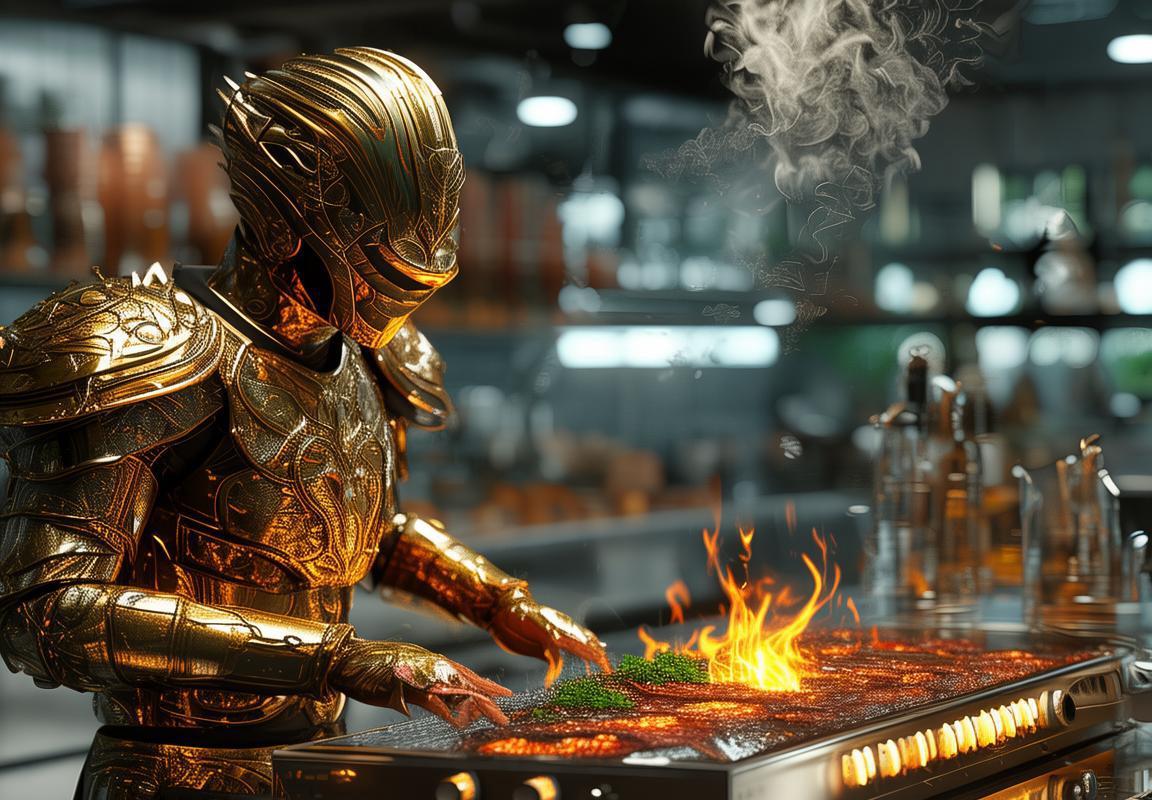
Future Outlook and Predictions
In the ever-evolving landscape of the kitchen appliance industry, contact grills have found a niche that perfectly complements the growing trend of made-to-order cuisine. Here, we delve into the intricate relationship between these two culinary trends, highlighting the benefits and future possibilities they present together.
Grills have long been a staple in home and commercial kitchens alike, but the introduction of contact grills has added a layer of convenience and control that resonates well with consumers seeking tailored meals. The technology behind these grills has not only made cooking more efficient but also more personalized, aligning seamlessly with the made-to-order movement.
As made-to-order cuisine continues to gain popularity, the demand for specialized cooking appliances, like contact grills, has surged. These grills are not just for grilling; they are versatile tools that can sear, sauté, and even steam food, offering chefs and home cooks a myriad of options for preparing a variety of dishes. Their compact size and ease of use make them ideal for busy lifestyles, where time is of the essence but quality should not be compromised.
One of the key factors driving the integration of contact grills with made-to-order meals is the control they provide over the cooking process. Traditional grills can often lead to inconsistent outcomes due to uneven heating. Contact grills, on the other hand, use even heat distribution to ensure that each piece of food is cooked to the consumer’s specification, whether that’s rare, medium, or well done.
The made-to-order trend also values customization, and contact grills enable chefs to cater to specific dietary requirements, such as gluten-free, paleo, or vegan diets, with ease. With a simple adjustment of the cooking temperature and duration, a diverse range of meals can be crafted to satisfy the unique tastes and needs of individual customers.
In Europe and North America, where made-to-order cuisine is particularly popular, the market dynamics for contact grills reflect the region’s culinary sophistication and demand for high-quality food experiences. Europe, known for its gourmet and artisanal approach to cooking, has embraced contact grills as a means to enhance the quality of food served in restaurants and homes alike. The continent’s diverse food culture, from the hearty dishes of the north to the delicate flavors of the Mediterranean, benefits greatly from the precision that contact grills offer.
Similarly, in North America, where the fast-paced lifestyle often leads to the desire for convenience without sacrificing quality, contact grills have found their place. They are a perfect match for the on-the-go consumer looking to enjoy a healthy and personalized meal, whether at a fast-casual restaurant or in their own kitchen.
Consumers in these regions have specific preferences when it comes to contact grills. They value features that not only ensure even cooking but also easy cleaning, safety, and energy efficiency. Features such as adjustable temperature controls, non-stick surfaces, and programmable settings are highly sought after. Moreover, the aesthetic appeal of the grills, including their size and design, plays a crucial role in the decision-making process, especially for home use.
The technology behind contact grills has seen remarkable innovations to keep up with these evolving demands. Some of the latest advancements include:
- Smart Grills: These incorporate built-in sensors and connectivity options, allowing users to monitor and control their grills remotely through apps. This not only enhances convenience but also ensures that food is cooked to the desired temperature and degree of doneness, regardless of the user’s location.
- Temperature Control Systems: Grills now come with precise temperature control, enabling chefs to cook different types of food at varying temperatures without compromising quality or safety.
- Healthy Cooking Features: Some contact grills are designed to minimize oil usage, making them a healthier choice for those looking to reduce their fat intake while still enjoying the flavors of grilled dishes.
- Sustainable and Eco-Friendly Materials: As awareness of environmental issues grows, manufacturers are focusing on creating contact grills using sustainable and eco-friendly materials.
The success stories of contact grill implementations in the made-to-order space are numerous. One such example is the fast-casual restaurant chain that introduced a line of contact grills into their kitchen. By allowing customers to select from a variety of protein sources, toppings, and sauce options, the chain was able to offer a unique dining experience that was both interactive and efficient. The grills’ ability to cook a variety of items simultaneously meant that customers could enjoy their customized meal within minutes.
Another case study comes from a high-end restaurant in Europe, where contact grills were integrated into their menu to provide a touch of modern technology alongside their classic culinary offerings. The precision and speed of these grills allowed the chefs to prepare high-quality dishes with ease, which was a hit with both diners and critics.
Sales and distribution channels for contact grills have also seen a transformation. Traditional retail stores, both brick-and-mortar and online, remain key channels for consumer purchases. However, the rise of specialty kitchen appliance stores and gourmet markets has created new avenues for manufacturers to reach consumers who are particularly interested in high-quality, specialized cooking equipment.
Furthermore, partnerships with home decor stores and kitchen design shops have become more common, as consumers seek out appliances that not only serve a practical purpose but also complement their kitchen aesthetic. Direct-to-consumer sales through the manufacturer’s website and social media platforms have also gained traction, offering a more personalized shopping experience.
In terms of challenges and opportunities, the contact grill market faces several hurdles. The increasing competition from other types of cooking appliances, such as induction cooktops and air fryers, can be a challenge. However, this also presents an opportunity for innovation, as manufacturers strive to differentiate their products through unique features and superior performance.
Additionally, as sustainability becomes a greater concern for consumers and businesses alike, there is an opportunity for manufacturers to focus on developing greener and more sustainable contact grill options. This includes not only the materials used in the appliances themselves but also in their manufacturing and packaging processes.
The future outlook for contact grills in the made-to-order market is bright. With the continued rise of made-to-order cuisine, the demand for versatile, efficient, and customizable cooking appliances like contact grills is likely to increase. Innovations in technology will further enhance the user experience and appeal of these grills, making them a staple in kitchens around the world.